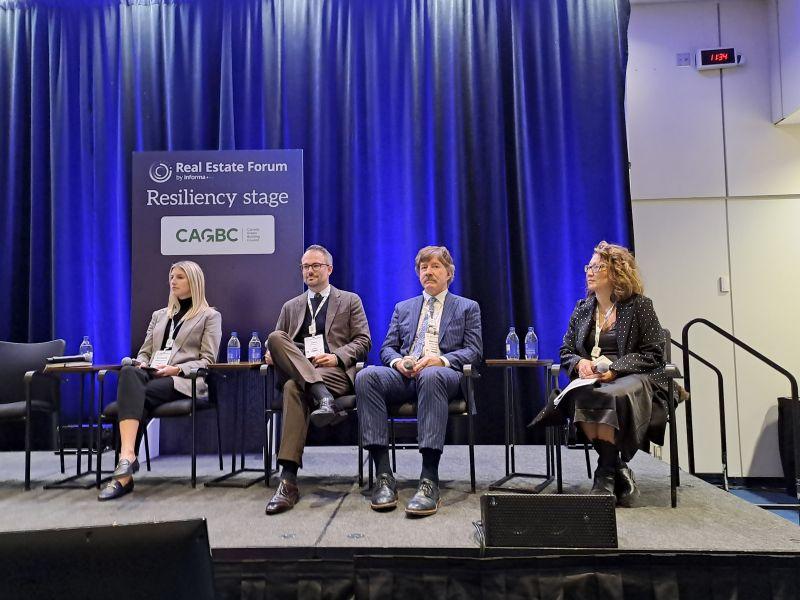The phone rings, but no one answers. A chatbot offers scripted replies. A portal delivers a string of charts that don’t explain why your energy bills jumped 40 per cent last quarter. You’re left to connect the dots, and carry the cost.
The energy industry is pulling back support just as the need for it is reaching an all-time high.
When complexity rises and support disappears
Over the past decade, energy has become one of the most volatile, fast-evolving industries in North America. Fossil fuel generation is declining faster than clean energy can replace it, grid infrastructure is under strain and capacity constraints are emerging in regions that have never experienced them before.
At the same time, businesses are under pressure to electrify, decarbonize, manage emissions and track performance across increasingly granular reporting requirements.
Just as this transition ramps up, many utilities, software vendors and service providers are reducing or eliminating the very support systems that once helped customers navigate it. In their place are online portals, automated help desks and dense documentation written for engineers, instead of business managers.
The justification often comes wrapped in buzzwords: “self-serve,” “plug-and-play,” “automated.” But the result is that customers are being left alone to manage problems they don’t fully understand.
This model might work in industries with predictable costs and stable systems, however it doesn’t work in one where the stakes are rising and the rules keep changing.
The knowledge gap is growing
Most businesses, especially in the small- and medium-sized enterprise category, don’t have dedicated energy experts on staff. They don’t employ people who can decode demand charges, optimize time-of-use rates, or interpret the impact of peak periods on monthly bills. Yet, they need to make energy procurement decisions that can carry millions of dollars in consequences.
In theory, digital tools are meant to help. Too often though, data is presented without interpretation and alerts are issued without explanation. The result is confusion, missed savings and growing risk.
One operations manager at a mid-sized manufacturing company in Ohio shared how her facility’s energy bills increased by nearly 40 per cent year over year. She spent months trying to find out why. When she finally reached someone at the utility, she learned the site was being charged peak demand rates during brief spikes caused by equipment cycling at lunch breaks, which is an avoidable cost, had someone flagged it earlier.
“I make automotive parts,” she said. “I’m not an energy expert. But apparently, I’m supposed to be both now.”
Stories like this are becoming more common, not less.
Who's being left behind
Larger corporations often have the resources to absorb this shift. They can afford to hire embedded consultants, train internal staff and purchase specialized tools with layers of support.
But the majority of affected organizations, such as mid-sized manufacturers, municipal governments, school districts, community facilities, small logistics and warehousing operations, don’t have those resources. They are expected to navigate energy complexity without guidance, all while juggling core business responsibilities.
Senior executives are not immune either. Many assume that because a platform was purchased or a system was installed, someone is managing the details. In many cases, no one is. There’s no account manager following up on anomalies, analyst reviewing trends, or expert linking operational performance to utility billing data. By the time discrepancies are noticed, they’ve often compounded into major financial or operational problems.
The prosumer paradox
The energy transition is also fundamentally reshaping the relationship between businesses and their energy providers. More and more organizations are being encouraged, or required, to become “prosumers” by generating some or all of their own energy through solar, wind, geothermal, or combined heat and power systems.
However, participating in generation means taking on new responsibilities. Understanding net metering rules, managing grid interconnection requirements, optimizing battery storage and navigating overlapping regulatory frameworks all require technical expertise most organizations don’t have.
This isn’t to say that customers shouldn’t play a more active role in their energy strategies, but that handing them complex systems without context and calling it “empowerment” is reckless.
What businesses should be asking
This shift in support is already here. Businesses that want to avoid costly mistakes need to start asking better questions before they sign a contract, install a system, or commit to a long-term software subscription. At a minimum, they should know:
- Will there be a named contact or just automated help channels?
- What happens after the platform is delivered? Are outcomes measured or just displayed?
- Who is responsible for data quality, and what happens when something looks off?
- Is there training to help internal teams interpret the data and make informed decisions?
These questions are table stakes in a market where energy decisions have direct financial, operational and reputational impacts.
Where to go from here
Technology isn’t the problem. In fact, digital tools are essential nowadays. Real-time data, automation and centralized visibility are critical to modern energy management, but they need support.
Businesses need to build enough internal capacity to know what they’re looking at, what they should be asking, and where their vendors might be falling short. That may mean re-training staff, assigning clear internal ownership, or partnering with advisors who don’t just provide software but help interpret the results and plan next steps.
Some service providers are stepping into this gap. They’re offering support that combines digital systems with actual human guidance like experts who don’t just deliver platforms but walk customers through usage, optimization and planning. They understand that in energy, results don’t come from data alone.
The path forward
The energy industry is in the midst of its most significant transformation in a century. Customers are being asked to take on more responsibility than ever, often with fewer resources and less guidance than before. That’s not sustainable.
The companies that succeed in this landscape will be those that treat energy management as a team effort, not a solo assignment. They will invest in expertise, not just tools, and build partnerships that blend technology with context.
Abandoning human support may reduce short-term costs, but it increases long-term risk. Businesses can’t afford to navigate this transition alone.










